

Welcome to the Tec Corp Stone Inc. Shop! Explore our extensive selection of premium stones, from elegant marble to durable granite. Whether you’re planning a renovation or a new build, find the perfect materials to elevate your space. Shop now for high-quality stones and bring your design dreams to life.
Like granite, quartzite is one of the best stone choices for cabinets and kitchen counters. Quartzite slab stone is a natural stone with extraordinary strength and high resistance to scratches and heat. With its marble-like appearance and beautiful patterns and colors, this stone is a great choice for countertops. We offer a wide range of these stones. including: Arctic ocean leather slab، Mont blanc leather slab، Mont blanc slab، Quartzite everest honed slab، Quartzite everest leather slab، Quartzite everest slab، Quartzite fantasy slab، Quartzite opus white leather slab، Quartzite opus white slab و Taj mahal quartzite slab. At Tec Corp Stone Inc., we believe that your project should be kept as simple and straightforward as possible, regardless how complex the task may seem.
Showing all 11 results
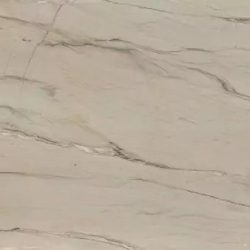

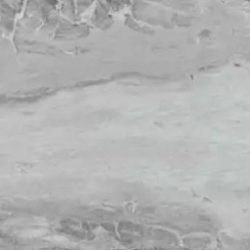
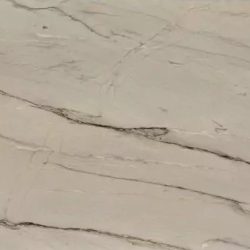
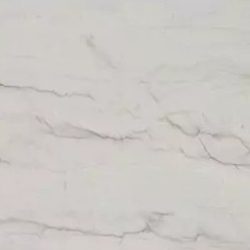
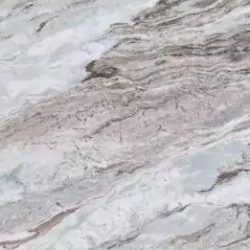

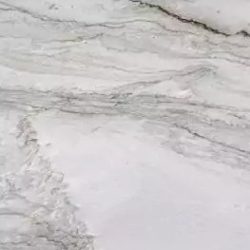

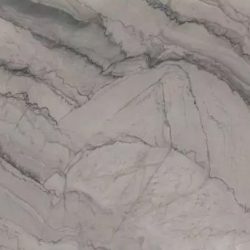

Quartzite is one of the most sought-after natural stones in modern architecture and interior design. With its marble-like elegance and granite-level durability, it has become a top choice for countertops, flooring, and decorative elements in homes and commercial spaces.
But what exactly is quartzite? Where does it come from, and why has it gained popularity? Let’s dive into the history and origin of this remarkable stone.
Quartzite is a metamorphic rock, meaning it forms when sandstone undergoes intense heat and pressure over millions of years. This process:
Compresses quartz grains tightly together, making it harder than granite.
Eliminates pores, making it resistant to water absorption.
Enhances durability, making it less prone to scratching and etching than softer stones like marble.
Fun Fact: Quartzite is almost 100% quartz, giving it a natural crystalline sparkle under light!
Quartzite deposits are found all over the world, with high-quality varieties sourced from:
✔ Brazil 🇧🇷 – Home to some of the most exotic quartzites in vibrant colors.
✔ India 🇮🇳 – Known for strong, durable quartzite slabs.
✔ Italy 🇮🇹 – Produces luxurious, marble-like quartzites.
✔ United States & Canada 🇺🇸🇨🇦 – Known for neutral-toned, high-quality varieties.
Canadian quartzite is highly valued due to its density, strength, and availability in earthy tones.
Quartzite has been used for centuries due to its durability. Some notable uses include:
Ancient Tools – Early humans used quartzite for making tools and weapons.
Roman Architecture – Used in paving roads and building structures due to its toughness.
Sacred Monuments – Many temples and ancient sculptures were carved from quartzite.
Today, quartzite is a luxury material used in high-end homes, modern skyscrapers, and artistic designs.
Quartzite has recently exploded in popularity, especially in Canada, for a few key reasons:
✔ Looks Like Marble, but More Durable – It offers the elegance of marble without the maintenance issues.
✔ Extremely Hard & Scratch-Resistant – Ideal for busy kitchens and bathrooms.
✔ Stain & Heat Resistant – Unlike marble, it does not etch or discolor easily.
✔ Available in Unique Colors – From pure white to exotic greens and blues, quartzite offers stunning natural beauty.
Trend Alert: More Canadian homeowners are choosing quartzite over marble due to its superior durability and low maintenance.
Quartzite is one of the hardest natural stones, making it an excellent choice for high-traffic areas. It combines the beauty of marble with the durability of granite, making it a top contender for countertops, flooring, and wall cladding.
Quartzite ranks 7 on the Mohs hardness scale, making it harder than granite (6) and much harder than marble (3-4).
It is highly scratch-resistant, meaning it can withstand daily wear and tear without damage.
Due to its dense composition, it is less likely to chip or crack under impact.
What this means for homeowners: If you’re looking for a stone that can handle heavy use in kitchens and bathrooms, quartzite is a fantastic option.
Quartzite is not porous like marble, but some varieties can have minor porosity, requiring occasional sealing.
When sealed properly, it is highly resistant to water, stains, and bacterial growth.
Unlike marble, quartzite does not etch when exposed to acidic substances like lemon juice or vinegar.
Best for: Busy kitchens and bathrooms where spills are common.
Quartzite is highly heat-resistant and can withstand high temperatures without damage.
Placing hot pots or pans directly on quartzite won’t cause burns or discoloration, unlike quartz (engineered stone).
Caution: While quartzite is heat-resistant, extreme temperature changes (like pouring ice water on a hot slab) may cause minor cracks over time.
Quartzite comes in a wide range of colors, depending on the minerals present.
Common shades include white, gray, beige, gold, green, and even exotic blues and pinks.
Many quartzites have marble-like veining, making them a perfect alternative to marble for those who want elegance with durability.
Pro Tip: If you love the look of Carrara or Calacatta marble but need something stronger, white quartzite is the best choice.
Quartzite is composed primarily of quartz , one of the hardest minerals on Earth.
It contains trace amounts of other minerals like iron oxide (which gives it red or pink tones) and mica (which adds sparkle).
It is chemically stable, meaning it won’t degrade over time or react with household chemicals.
What this means: Unlike marble, quartzite doesn’t dissolve or weaken when exposed to acidic cleaners.
Quartzite is one of the most versatile and luxurious natural stones used in modern interior design and architecture. Its combination of durability, heat resistance, and marble-like beauty makes it a top choice for both residential and commercial projects.
Let’s explore where and how quartzite is used to elevate spaces!
Quartzite has become a premium alternative to marble and granite for kitchen countertops due to its durability and stain resistance.
✔ Highly resistant to scratches and heat, making it ideal for busy kitchens.
✔ Unlike marble, it won’t etch or discolor from acidic foods like lemon juice or vinegar.
✔ Available in white and gray tones, perfect for modern and classic kitchen designs.
Quartzite is an excellent choice for bathrooms because it resists moisture, mold, and mildew.
✔ Ideal for vanity countertops, backsplashes, and shower walls.
✔ More durable than marble, meaning it won’t develop water stains easily.
✔ Creates a luxurious spa-like feel with its natural veining.
Quartzite’s hardness and slip resistance make it a great material for high-traffic flooring and staircases.
✔ Highly durable, making it perfect for busy households and commercial spaces.
✔ Non-slip texture, especially when honed or leather-finished.
✔ Adds a luxurious and natural feel to interiors.
Quartzite is a stunning option for fireplaces and feature walls, adding depth and character to any space.
✔ Heat-resistant, making it safe for fireplace surrounds.
✔ Available in bold, dramatic colors for a unique focal point.
✔ Works well in both modern and rustic interiors.
Because quartzite is weather-resistant, it’s commonly used for outdoor spaces such as:
✔ Patios & Pool Surrounds – Slip-resistant and resistant to sun damage.
✔ Outdoor Kitchen Countertops – Can withstand rain, heat, and stains.
✔ Wall Cladding – Adds a natural stone finish to modern exteriors.
Final Thoughts: Why Quartzite is a Top Choice for Homeowners
Quartzite’s strength, beauty, and versatility make it one of the best natural stones for both interior and exterior applications. Whether you’re designing a modern kitchen, a luxurious bathroom, or a statement fireplace, quartzite offers durability and timeless elegance.
Quartzite is an exceptional natural stone that offers both beauty and durability, making it a top choice for homeowners and designers. However, like any material, it has its own strengths and weaknesses. Let’s take a closer look at the pros and cons of using quartzite in your home or commercial space.
✔ Quartzite ranks 7 on the Mohs hardness scale, making it harder than granite and marble.
✔ It’s highly resistant to scratches, perfect for kitchens and high-traffic areas.
✔ Unlike marble, it won’t develop dents or chips easily.
Best for: Kitchen countertops, flooring, and staircases in busy households.
✔ Can withstand high temperatures without damage.
✔ Unlike engineered quartz, quartzite won’t discolor or burn when exposed to hot pans.
✔ Safe for fireplace surrounds and outdoor kitchens.
Caution: While it’s heat-resistant, placing hot cookware directly on the surface for too long might cause stress cracks.
✔ Quartzite is less porous than marble, making it more resistant to stains.
✔ It does not etch when exposed to acidic liquids like lemon juice or wine.
✔ A properly sealed quartzite surface repels moisture, making it ideal for bathrooms and outdoor use.
Maintenance Tip: Sealing it once a year enhances its stain resistance.
✔ Requires minimal upkeep compared to marble.
✔ Simple cleaning with mild soap and water is enough for daily care.
✔ No special cleaners or high-maintenance sealing needed if properly treated.
Best for: Homeowners who want natural stone beauty with less hassle.
✔ Offers exquisite, marble-like veining with a wider color range than most natural stones.
✔ Available in whites, grays, beiges, golds, greens, and even exotic blues and pinks.
✔ No two quartzite slabs are exactly alike, making each installation one of a kind.
Trending: Homeowners love white quartzite as a luxury Carrara marble alternative.
✔ Unlike quartz (engineered stone), quartzite won’t fade or discolor under sunlight.
✔ A great choice for patios, outdoor countertops, and exterior wall cladding.
Best for: Homes with lots of natural light or outdoor kitchens.
While quartzite is less porous than marble, it’s not completely non-porous.
Some quartzite varieties can absorb moisture and develop stains if not sealed properly.
Needs annual sealing to maintain its resistance to stains.
Solution: Use a high-quality stone sealer once a year.
Quartzite is often pricier than granite and some quartz options.
Exotic quartzite slabs with unique veining can be very expensive.
Price Range in Canada:
Due to its hardness, quartzite is harder to cut and shape than softer stones.
Installation requires experienced fabricators, which can increase costs.
Cutting and polishing take longer compared to granite or marble.
Tip: Always choose a professional installer to avoid cracks and poor finishes.
Since quartzite is a natural stone, it doesn’t come in uniform or bright artificial colors like engineered quartz.
If you need pure white, solid black, or bold colors, quartzite may not be the best option.
Best Alternative: If you want bright or custom colors, engineered quartz might be a better fit.
✔ Best for: Homeowners who want a luxurious, durable, and natural-looking stone with minimal maintenance.
Not ideal for: Those who prefer low-cost options or bright solid colors.
If you love the elegance of marble but need the strength of granite, quartzite is the perfect balance of beauty and durability.
Quartzite is often compared to other natural and engineered stones like granite, marble, quartz, and porcelain. While all these materials have their own strengths, quartzite offers a unique balance of durability, heat resistance, and natural beauty. Let’s break down how it compares to each alternative.
| Feature | Quartzite | Granite |
| Hardness | (Mohs 7 – harder than granite) | (Mohs 6 – slightly softer) |
| Scratch Resistance | (Highly scratch-resistant) | (Resistant, but slightly more prone to scratches) |
| Porosity | (Needs sealing, but not as porous as marble) | (Requires sealing, but usually denser) |
| Heat Resistance | (Very heat-resistant) | (Very heat-resistant) |
| Stain Resistance | (Requires sealing to prevent stains) | (Requires sealing but generally resistant) |
| Aesthetics | (Marble-like veining, unique natural patterns) | (Grainy and speckled, variety of colors) |
| Price | (More expensive) | (More affordable) |
Verdict: Quartzite is harder and more luxurious, while granite is more affordable and available in a wider range of patterns.
| Feature | Quartzite | Marble |
| Hardness | (Mohs 7 – much harder than marble) | (Mohs 3-4 – soft and prone to scratches) |
| Scratch Resistance | (Highly scratch-resistant) | (Scratches easily, especially in kitchens) |
| Porosity | (Requires sealing, but less porous than marble) | (Highly porous, stains easily) |
| Heat Resistance | (Highly heat-resistant) | (Can withstand heat, but may discolor over time) |
| Stain Resistance | (Resistant when sealed) | (Very prone to stains and etching) |
| Aesthetics | (Looks like marble but stronger) | (Classic, elegant veining) |
| Price | (Higher cost) | (Varies, but generally more affordable) |
Verdict: Quartzite is a much more durable alternative to marble, offering a similar luxurious look without the high maintenance.
| Feature | Quartzite | Quartz |
| Hardness | (Mohs 7 – very hard) | (Engineered with resins, softer than quartzite) |
| Scratch Resistance | (Very scratch-resistant) | (Resists scratches, but not as tough as quartzite) |
| Porosity | (Natural stone, needs sealing) | (Non-porous, never needs sealing) |
| Heat Resistance | (Highly heat-resistant) | (Can be damaged by heat) |
| Stain Resistance | (Resistant with sealing) | (Highly stain-resistant, no sealing needed) |
| Aesthetics | (Natural stone, unique veining) | (Man-made, uniform designs) |
| Price | (More expensive) | (More budget-friendly) |
Verdict: Quartzite is 100% natural, heat-resistant, and unique, while quartz is low-maintenance but can be damaged by heat.
| Feature | Quartzite | Porcelain |
| Hardness | (Mohs 7 – highly durable) | (Durable but can crack under impact) |
| Scratch Resistance | (Resistant to scratches) | (Scratch-resistant, but can chip) |
| Porosity | (Natural stone, requires sealing) | (Non-porous, never needs sealing) |
| Heat Resistance | (Withstands high heat) | (Highly heat-resistant) |
| Stain Resistance | (Requires sealing) | (Completely stain-proof) |
| Aesthetics | (Natural veining, luxury feel) | (Printed patterns, not unique) |
| Price | (Premium cost) | (Affordable) |
Verdict: Porcelain is lower maintenance and cheaper, but quartzite offers real stone beauty and uniqueness.
✔ Choose Quartzite if: You want natural beauty, durability, and heat resistance with a marble-like appearance.
✔ Choose Granite if: You want a tough, lower-cost natural stone with speckled patterns.
✔ Choose Quartz if: You prefer easy maintenance and don’t need heat resistance.
✔ Choose Porcelain if: You need an affordable, non-porous, and modern material with minimal upkeep.
Quartzite is a premium natural stone, and its price reflects its durability, aesthetics, and high-end appeal. While it is generally more expensive than granite and engineered quartz, its long lifespan and luxurious look make it a worthwhile investment. Below, we’ll break down the cost of quartzite slabs, installation fees, and factors affecting pricing in Canada.
The total cost of quartzite depends on several factors, including the type of quartzite, thickness, installation complexity, and location. Here’s a breakdown:
| Type of Quartzite | Price Per Square Foot (CAD) |
| Standard Quartzite (basic colors, minimal veining) | $80 – $120 |
| Premium Quartzite (exotic patterns, rare colors) | $120 – $180 |
| Super Exotic Quartzite (highly unique veining, rare imports) | $180+ |
Key Takeaway: The more unique and rare the quartzite slab, the higher the price.
In addition to the material cost, you need to factor in fabrication, installation, and labor fees.
| Service | Price Per Square Foot (CAD) |
| Fabrication (Cutting, Edging, and Polishing) | $30 – $50 |
| Professional Installation | $40 – $60 |
| Sealing & Finishing | $5 – $10 |
Total Cost (Material + Installation): $150 – $250 per square foot installed (on average).
Several factors determine the final cost of quartzite countertops or slabs:
✔ Quartzite imported from Brazil, Italy, or India tends to be more expensive.
✔ Exotic varieties like Taj Mahal Quartzite or Blue Macaubas can cost over $200 per square foot.
✔ Standard thickness (2 cm) is cheaper, while thicker slabs (3 cm or more) increase the price.
✔ Thicker slabs require stronger support and professional installation, adding to the overall cost.
✔ Simple edge styles (straight, beveled) cost less.
✔ Fancy edge designs (waterfall, ogee) add $10 – $25 per linear foot to the price.
✔ Large, seamless quartzite countertops require special handling and more labor, increasing costs.
✔ Additional cutouts for sinks, faucets, and cooktops add to the total price.
✔ Quartzite costs vary by city due to shipping, demand, and labor costs.
✔ In major cities like Toronto, Vancouver, and Montreal, installation costs tend to be higher.
Here’s an estimated cost breakdown for different quartzite projects in Canada:
| Quartzite Type | Estimated Cost (CAD) |
| Basic Quartzite | $7,500 – $10,000 |
| Premium Quartzite | $10,000 – $14,000 |
| Exotic Quartzite | $14,000+ |
Tip: Waterfall edges and full-height backsplashes can add $2,000+ to the total price.
| Quartzite Type | Estimated Cost (CAD) |
| Basic Quartzite | $1,500 – $2,500 |
| Premium Quartzite | $2,500 – $3,500 |
| Exotic Quartzite | $3,500+ |
| Quartzite Type | Estimated Cost (CAD) |
| Basic Quartzite | $2,000 – $3,500 |
| Premium Quartzite | $3,500 – $5,000 |
| Exotic Quartzite | $5,000+ |
Tip: Bookmatched quartzite slabs for fireplaces are trending but cost more due to extra material and labor.
✔ Pros: Long-lasting, stunning aesthetics, high durability, heat resistance.
Cons: High upfront cost, requires professional installation, needs periodic sealing.
If you’re looking for a luxurious, natural stone that lasts a lifetime, quartzite is a worthy investment for your home.
Quartzite is an incredibly durable and long-lasting natural stone, but like all high-end surfaces, it requires proper maintenance to preserve its beauty and strength. While it is heat-resistant and scratch-resistant, it is still a porous stone, meaning it needs sealing to prevent stains and etching. Below, we’ll cover the best cleaning practices, sealing recommendations, and do’s & don’ts to keep your quartzite surfaces in perfect condition.
✔ Use a pH-neutral cleaner – Avoid acidic or harsh chemical cleaners (like vinegar, lemon, or bleach).
✔ Wipe spills immediately – Quartzite is resistant to stains, but prolonged exposure to wine, coffee, or oils can cause discoloration.
✔ Use a soft microfiber cloth or sponge – Avoid abrasive scrubbers that could wear down the sealant.
✔ Warm water + mild soap is enough for daily cleaning – No need for fancy cleaning products!
Pro Tip: A simple mix of warm water and a drop of dish soap works wonders for everyday cleaning.
Since quartzite is a porous natural stone, it requires sealing to prevent liquids from penetrating and causing stains.
✔ Light-use areas (fireplaces, walls, decorative surfaces): Every 1-2 years
✔ Heavy-use areas (kitchen countertops, bathroom vanities): Every 6-12 months
Pour a few drops of water on the surface.
Wait 10-15 minutes.
If the water absorbs into the stone, it’s time to reseal!
✔ Impregnating sealers (like StoneTech BulletProof Sealer) penetrate deep into the stone for long-lasting protection.
✔ Enhancing sealers add a slight sheen and deepen the color of the stone.
Important: Sealing doesn’t make quartzite stain-proof—it makes it stain-resistant! Always wipe spills quickly.
No acidic cleaners – Avoid vinegar, citrus-based cleaners, and ammonia.
No rough scrubbers – Steel wool or harsh pads can scratch the surface.
No prolonged exposure to water – Standing water can lead to mineral buildup.
Don’t use regular household cleaners like Windex or Lysol – They can weaken the sealer.
✔ Quartzite is highly heat-resistant, but placing hot pans directly on the surface can weaken the sealer or cause thermal shock in rare cases.
✔ Always use trivets or heat pads to protect the finish.
Pro Tip: Unlike quartz (which has resins that can melt), quartzite won’t scorch easily, making it ideal for kitchens!
✔ Quartzite is harder than granite and highly scratch-resistant.
✔ However, using sharp knives directly on quartzite can dull the knife blade (rather than damage the stone).
Verdict: Always use a cutting board to protect both your knives and your countertop.
If you get a stubborn stain, try these methods:
✔ Use a baking soda + water paste, apply to the stain, and let it sit for 24 hours before wiping away.
Oil-Based Stains (Grease, Butter, Makeup)
✔ Use a baking soda + hydrogen peroxide paste to break down the stain.
Hard Water or Mineral Buildup
✔ A razor blade can gently remove buildup without scratching the stone.
Important: Never use acidic stain removers like vinegar or lemon juice!
✔ Reseal regularly to maintain quartzite’s stain resistance.
✔ Use coasters under drinks to avoid etching.
✔ Keep quartzite dry – standing water can weaken the sealant over time.
✔ Dust and wipe surfaces daily to prevent dirt buildup.
With proper care, quartzite surfaces can stay beautiful and damage-free for decades!
Quartzite has become one of the hottest trends in Canada’s home design and renovation market. Its natural beauty, durability, and luxurious appearance make it a top choice for homeowners, interior designers, and architects looking for high-end finishes. But what’s driving its popularity? Let’s explore the latest trends, consumer preferences, and design styles shaping the demand for quartzite in Canada.
Natural Aesthetics with Unique Patterns
✔ Unlike engineered quartz, quartzite offers one-of-a-kind veining and natural color variations, giving it an exotic, high-end appeal.
✔ Homeowners are shifting towards earthy, organic aesthetics, making quartzite a sought-after material.
Superior Durability Compared to Marble
✔ Many Canadian homeowners love the look of marble but want a stronger and more durable alternative—quartzite provides the best of both worlds.
✔ It’s scratch-resistant, heat-resistant, and less porous than marble, making it ideal for busy kitchens.
Luxury Appeal in High-End Homes
✔ Quartzite is often seen in luxury real estate listings, increasing its desirability.
✔ It’s used in custom kitchens, spa-like bathrooms, and feature walls, elevating property values.
Growing Demand for Natural Stone in Canada
✔ With the rise of eco-conscious design, more Canadians are choosing natural, sustainable materials over synthetic options.
✔ Quartzite’s natural formation and minimal processing make it a preferred eco-friendly choice.
Waterfall Quartzite Countertops
✔ Sleek, modern, and dramatic, waterfall-edge quartzite countertops are dominating high-end kitchen designs.
✔ Popular in luxury homes in Toronto, Vancouver, and Montreal.
Full-Height Quartzite Backsplashes
✔ Instead of traditional tile, many designers are opting for full slabs of quartzite to create a seamless, elegant look.
✔ Popular quartzite colors for backsplashes: Taj Mahal, White Macaubas, and Azul Imperial.
Quartzite Feature Walls & Fireplaces
✔ In living rooms and commercial spaces, quartzite is being used for bold statement walls.
✔ Bookmatched quartzite designs (where veining patterns mirror each other) are a huge trend in modern homes.
Light & Neutral Quartzite Shades
✔ Soft whites, greys, and beige tones are in high demand, as they create a bright, airy feel.
✔ Trending quartzite colors: Taj Mahal, Sea Pearl, Perla Venata.
Honed & Leathered Finishes
✔ While polished quartzite remains popular, honed (matte) and leathered finishes are trending for their softer, more natural look.
✔ These finishes reduce glare and fingerprints, making maintenance easier.
| Feature | Quartzite | Quartz | Granite | Marble |
| Natural Stone? | Yes | No (engineered) | Yes | Yes |
| Durability | Very High | Very High | High | Moderate |
| Heat Resistance | Excellent | Can Burn | Excellent | Can Stain |
| Scratch Resistance | Very High | High | High | Low |
| Porosity | Needs Sealing | No Sealing Needed | Needs Sealing | Highly Porous |
| Luxury Appeal | 5 | 3 | 3 | 5 |
Key Takeaway: Quartzite is the best choice for durability, luxury appeal, and natural aesthetics—making it more desirable than quartz, granite, or marble in Canada’s high-end market.
✔ Toronto, Ontario – Quartzite is a top choice for luxury condo renovations and upscale custom homes.
✔ Vancouver, British Columbia – Demand is high in modern, minimalist homes, especially for Taj Mahal and White Macaubas quartzite.
✔ Montreal, Quebec – Quartzite is favored for its classic elegance in both residential and commercial projects.
✔ Calgary & Edmonton, Alberta – Popular in rustic-luxe home designs, paired with wood and metal accents.
If you’re looking for a natural, durable, and visually striking material, quartzite is a perfect investment. Its rising popularity in Canada is driven by luxury trends, eco-conscious choices, and superior durability over other natural stones.
Selecting the right quartzite for your home or commercial space requires careful consideration of aesthetics, durability, maintenance, and budget. While quartzite offers a unique blend of beauty and resilience, not all quartzite slabs are the same. Here’s a comprehensive guide to help you make the best choice.
One of the biggest challenges when choosing quartzite is ensuring you’re getting real, high-quality quartzite and not a mislabeled stone. Some suppliers mistakenly sell soft quartzite (which behaves more like marble) or even dolomitic marble under the quartzite name.
✔ How to Test for Real Quartzite:
The Scratch Test – Try scratching the surface with a steel knife. True quartzite is harder than steel (Mohs 7+), so it won’t scratch easily.
The Acid Test – Place a few drops of vinegar or lemon juice on the stone. If it etches (leaves a dull spot), it may not be true quartzite.
Pro Tip: Always buy from a reputable supplier who provides proper documentation on the stone’s origin.
Quartzite is known for its stunning, natural veining that resembles marble, but it comes in a wider range of colors.
✔ Taj Mahal – Warm cream tones, ideal for luxury kitchens
✔ White Macaubas – Soft white with gray veining, perfect for minimalist spaces
✔ Sea Pearl – Subtle green and gray hues, great for coastal or modern designs
✔ Azul Imperial – Striking blue tones, best for statement walls or bars
✔ Fusion Quartzite – Vibrant colors with dramatic veining, perfect for bold interior designs
Pro Tip: Lighter quartzite slabs are more timeless, while darker or colorful slabs are trendier but may age differently.
Quartzite comes in multiple finishes, each offering a different aesthetic and practical advantage.
✔ Polished Quartzite – High-gloss, enhances color depth, best for luxury kitchens & bathrooms
✔ Honed Quartzite – Matte finish, reduces glare, best for modern or rustic designs
✔ Leathered Quartzite – Textured finish, hides fingerprints, best for high-traffic areas
Pro Tip: If you want a low-maintenance finish, go for leathered quartzite, as it hides water spots and smudges better than polished surfaces.
Quartzite slabs typically come in 2 cm (¾ inch) or 3 cm (1 ¼ inch) thickness.
✔ 2 cm slabs – Ideal for wall cladding, backsplashes, and bathroom vanities
✔ 3 cm slabs – Best for kitchen countertops and high-use surfaces
Popular Edge Profiles:
Straight Edge – Clean and modern look
Mitered Edge – Creates a thicker appearance for luxury kitchens
Ogee Edge – Classic, elegant look for traditional homes
Pro Tip: If you want a waterfall countertop, go for mitered edges for a seamless flow of veining.
✔ Quartzite is more resistant to stains than marble, but it still needs sealing every 6-12 months.
✔ Always use a pH-neutral cleaner to avoid damaging the sealant.
✔ Light-colored quartzite (like White Macaubas) requires more frequent sealing than darker varieties.
Pro Tip: Test the sealant every few months by dropping water on the surface. If it absorbs in under 10 minutes, it’s time to reseal!
Quartzite pricing varies depending on:
✔ Rarity & Color – Exotic colors like Azul Imperial are more expensive than neutral tones.
✔ Slab Size & Thickness – Thicker slabs and large seamless pieces cost more per square foot.
✔ Origin & Availability – Quartzite from Brazil or Italy tends to be pricier due to import costs.
Typical Quartzite Prices in Canada:
✔ Mid-range Quartzite – $80 to $120 per sq. ft. (Taj Mahal, White Macaubas)
✔ Luxury Quartzite – $120 to $200 per sq. ft. (Azul Imperial, Fusion Quartzite)
✔ Installation Costs – $50 to $100 per sq. ft., depending on complexity
Pro Tip: Ask for remnant pieces if you need quartzite for a small vanity or backsplash to save costs!
Looking for premium quartzite slabs? Here are some top Canadian suppliers:
✔ Ciot (Toronto, Montreal, Vancouver) – High-end quartzite selections
✔ Marble & Granite Stone (Mississauga, ON) – Wholesale natural stone supplier
✔ Stone Tile Canada (Ontario, BC) – Carries unique quartzite varieties
✔ Terra Stone Gallery (Vancouver) – Specializes in imported Brazilian quartzite
Pro Tip: Always inspect slabs in person before purchasing to see natural variations and veining patterns.
✔ If you want the beauty of marble with better durability, quartzite is an excellent investment.
✔ It’s perfect for kitchens, bathrooms, fireplaces, and feature walls in luxury homes.
✔ Just be prepared for occasional sealing and proper cleaning to maintain its look.

At Tec Corp Stone Inc., we pride ourselves on delivering exceptional craftsmanship and unmatched quality. With years of experience in stone fabrication, our dedicated team ensures every project is executed with precision and care. We offer personalized service, innovative solutions, and a commitment to customer satisfaction. Choose us for your stone needs and experience the Tec Corp Stone Inc. difference.